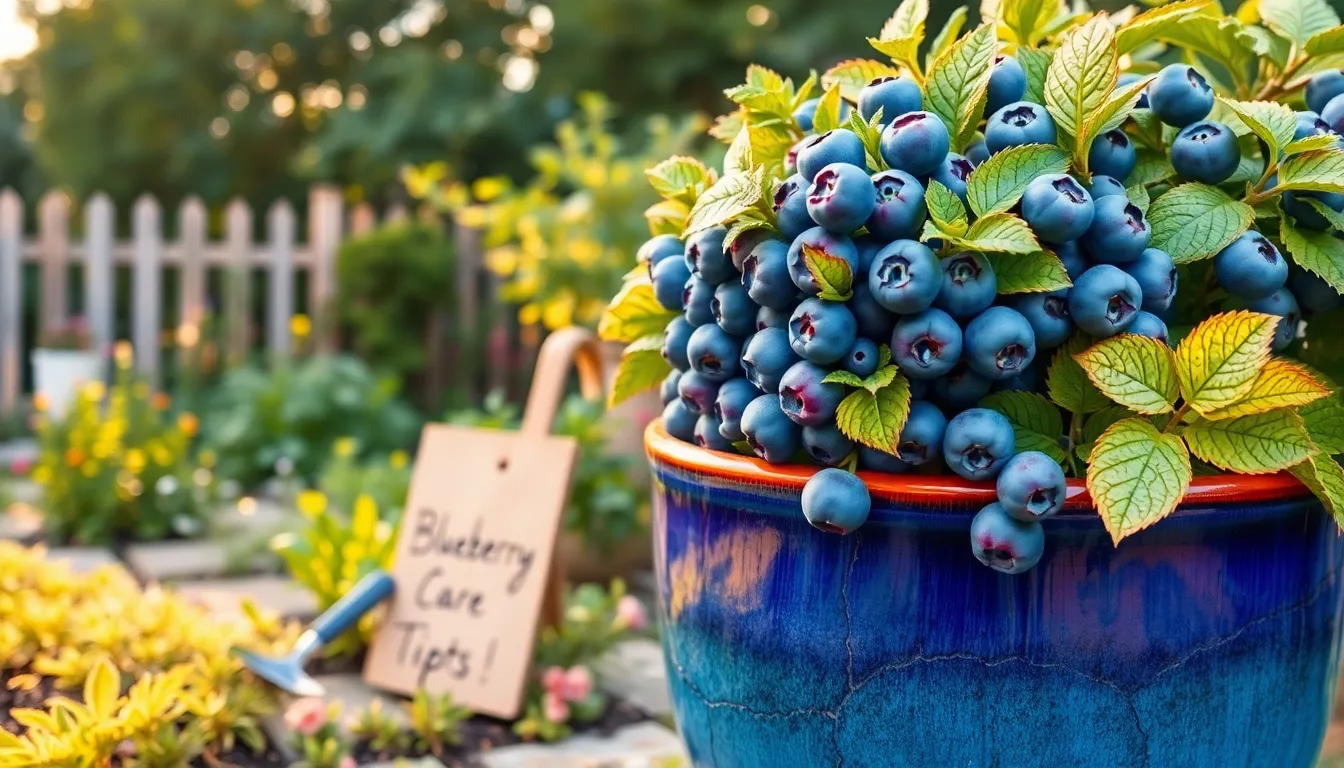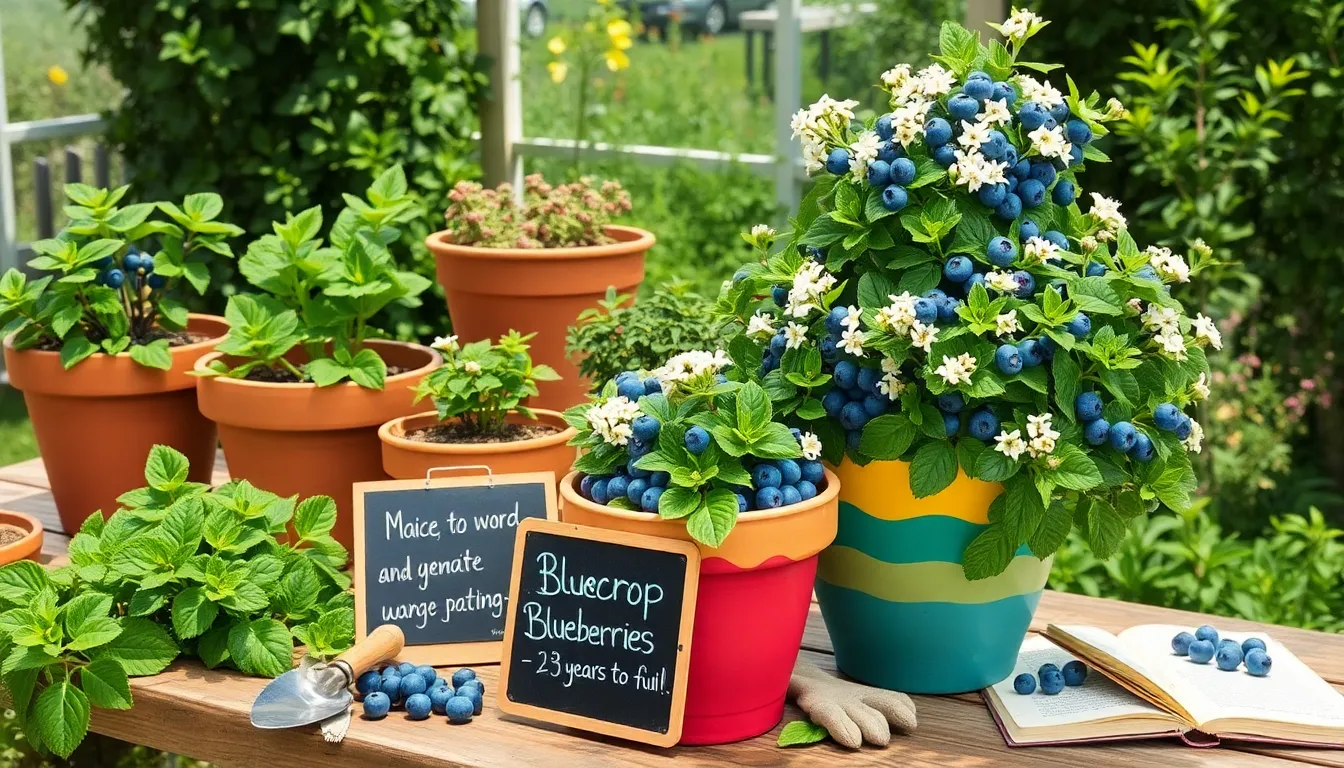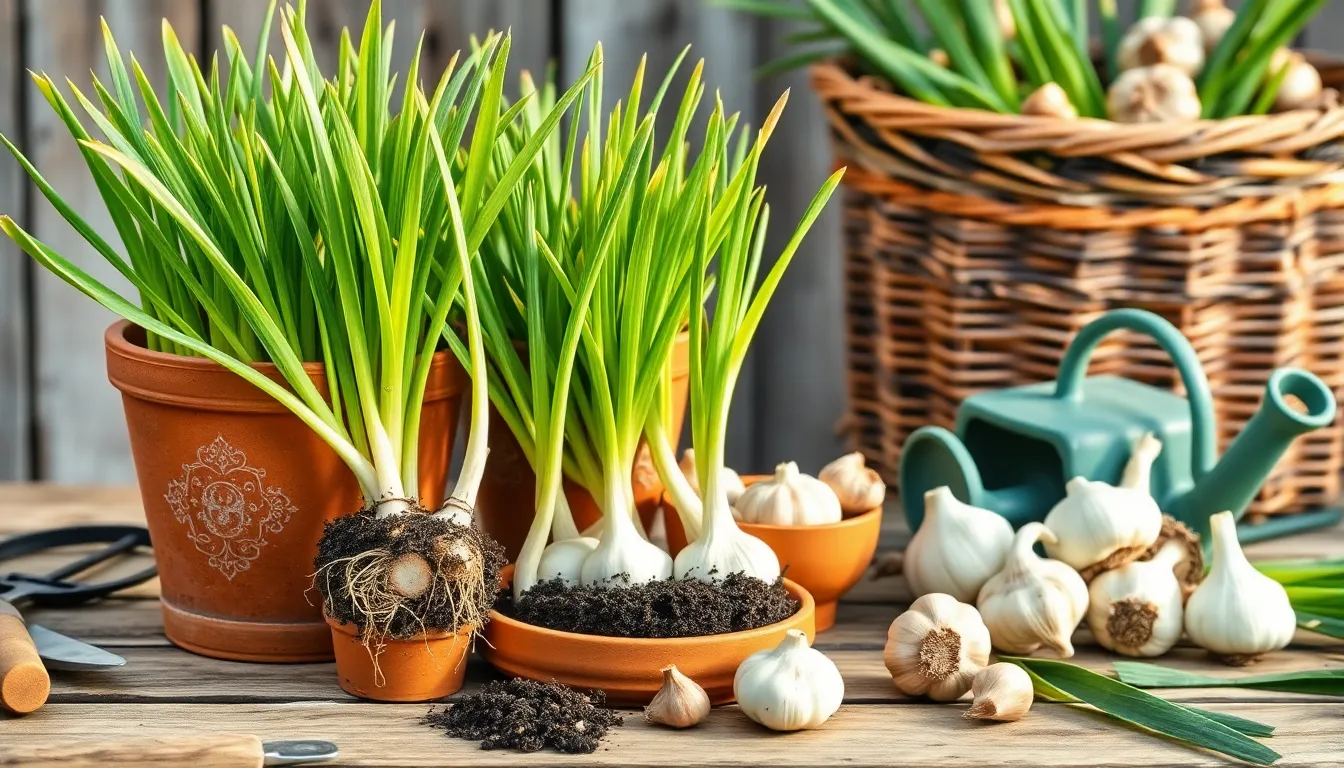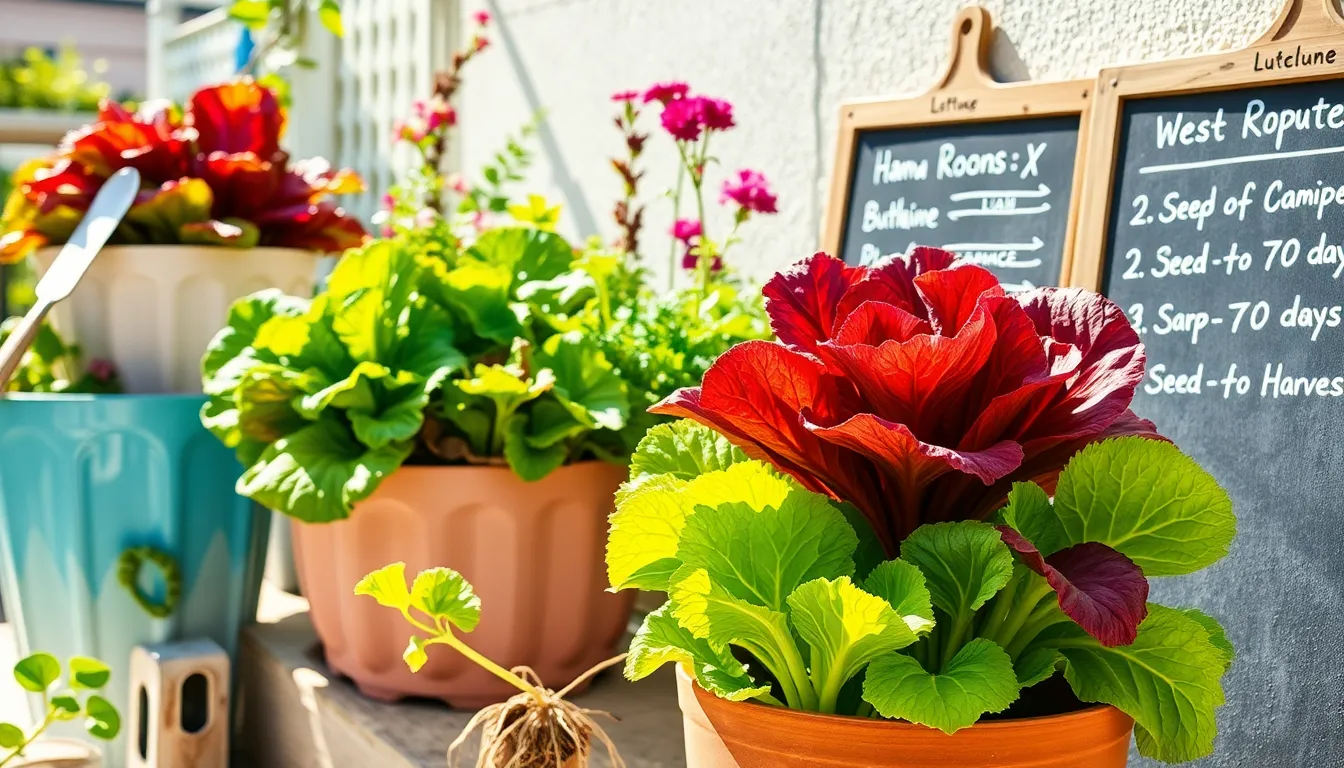For many of us, the idea of plucking fresh blueberries from a pot on our porch is undeniably appealing. Blueberries are not only delicious and nutritious, but they also hold a certain charm when grown at home, offering gardeners the joy of nurturing a plant that bears fruit. However, while the thought of cultivating these little blue gems in containers may seem perfect for those with limited space, it is not without its challenges. Understanding the potential drawbacks can help gardeners make informed decisions and set realistic expectations for their blueberry-growing journeys.
In this article, we’ll explore the lesser-known side of growing blueberries in pots, shedding light on the hurdles that both novice and seasoned gardeners might encounter. From the intricacies of maintaining the right soil acidity to the frequent watering needs, there are several factors that require careful attention. Whether you’re a beginner eager to try your hand at container gardening or a seasoned horticulturist looking to expand your fruit-bearing repertoire, knowing these disadvantages will equip you with the knowledge to face them head-on. As we delve into these aspects, you’ll discover practical insights and strategies to potentially overcome these challenges, ensuring that your potted blueberry plants thrive despite the odds.
Limited Root Space Challenges
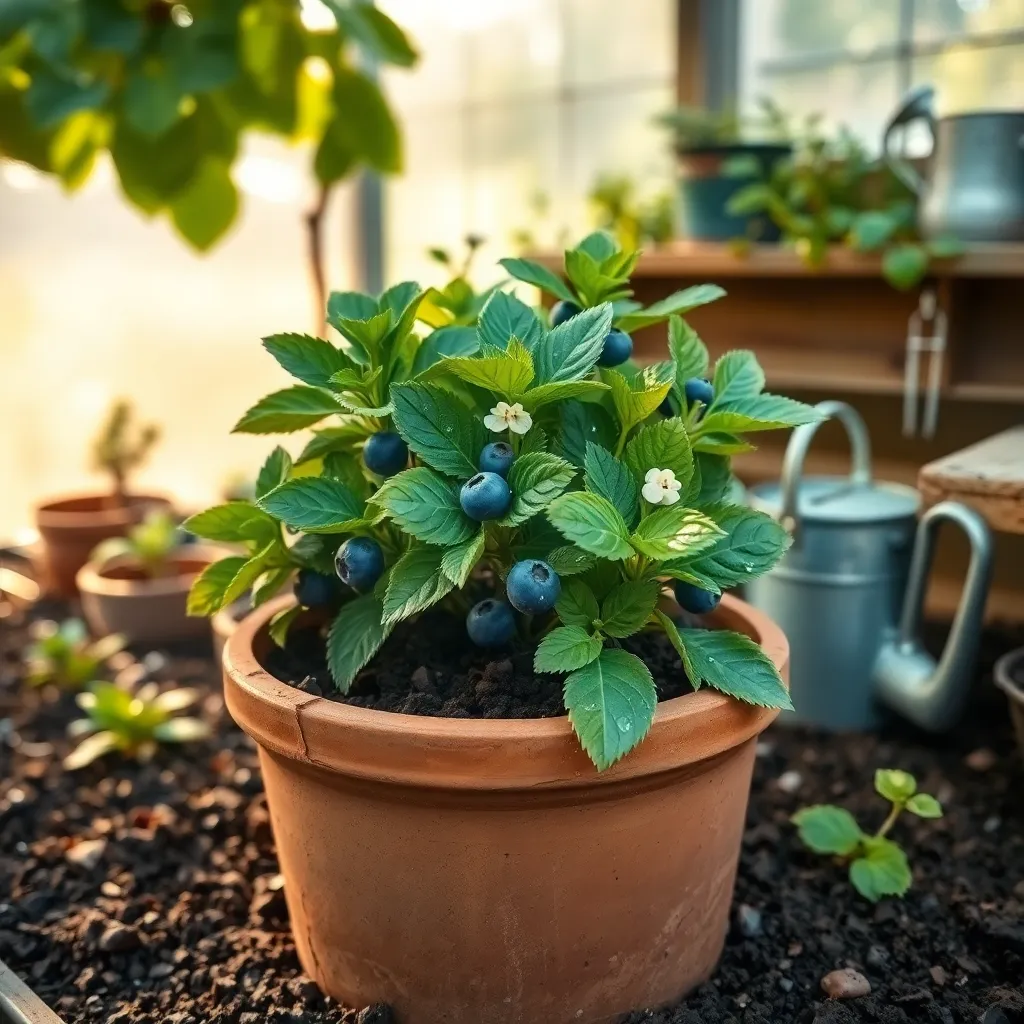
When growing blueberries in pots, the most significant challenge is limited root space, which can hinder the plant’s growth. To ensure success, choose a pot that is at least 18 inches in diameter and depth to provide sufficient room for root expansion.
It’s essential to use a potting mix that drains well while retaining moisture, as blueberries thrive in consistently moist, yet well-drained soil. A mix of peat moss, pine bark, and perlite works well, ensuring the roots have access to both air and water.
Regular watering is crucial since pots can dry out faster than garden soil, especially in warmer months. Check the soil moisture frequently and water deeply when the top inch of soil feels dry, ensuring that water drains out of the bottom to prevent root rot.
For advanced care, consider using a liquid fertilizer formulated for acid-loving plants every two weeks during the growing season. This helps maintain the acidic environment blueberries need, with a target pH of 4.5 to 5.5, which can be monitored using a simple soil pH tester.
Nutrient Deficiency Risks
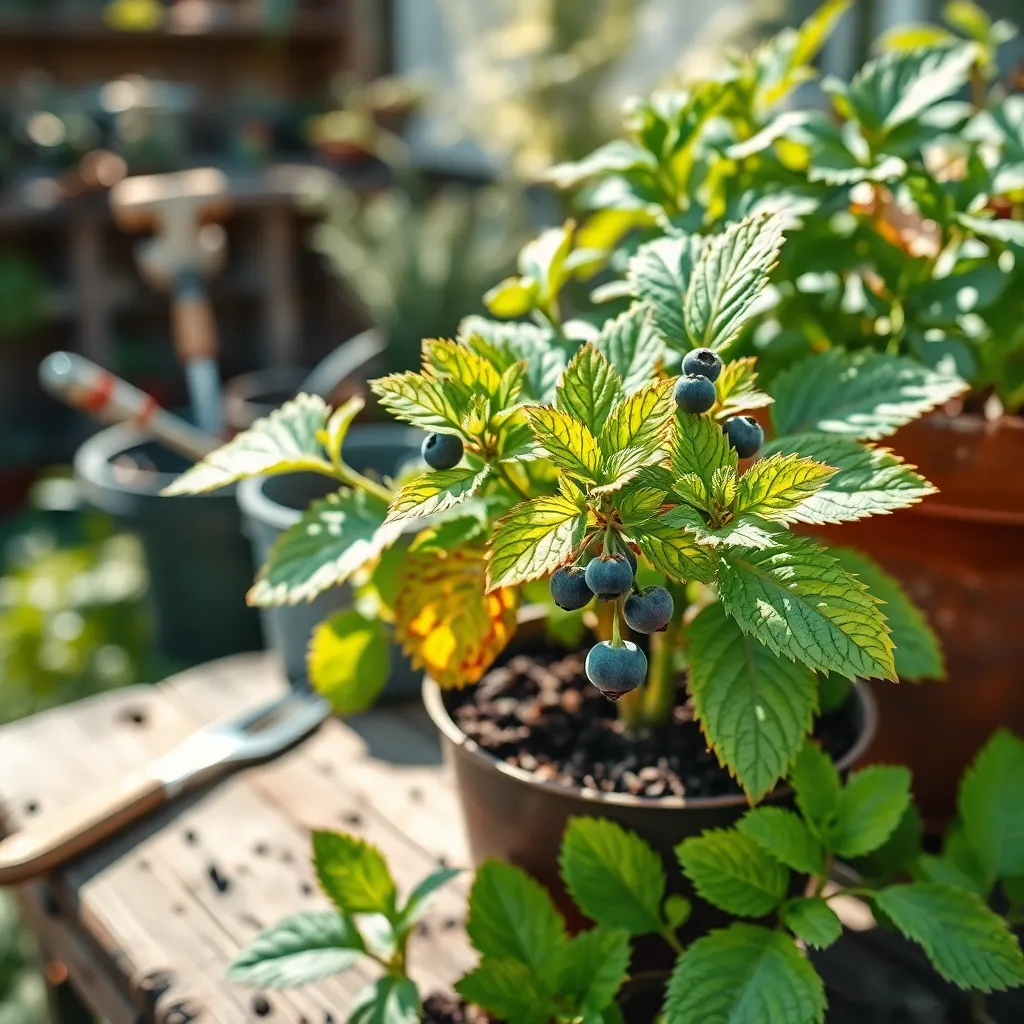
Growing blueberries in pots can lead to nutrient deficiencies, as the limited soil volume restricts the availability of essential nutrients. To counteract this, it’s crucial to use a high-quality potting mix specifically formulated for acid-loving plants, enriched with slow-release fertilizers.
Regular feeding is vital to maintaining healthy blueberry plants in containers. Consider using a liquid fertilizer designed for acid-loving plants every four to six weeks during the growing season to ensure they receive a balanced supply of nutrients.
In addition to fertilizing, monitoring soil pH is essential because blueberries thrive in acidic conditions. Aim to keep the soil pH between 4.5 and 5.5 by periodically testing it and adding soil acidifiers, such as sulfur or specialized products, if necessary to maintain the right balance.
Watering practices also play a crucial role in nutrient uptake for potted blueberries. Ensure consistent moisture without waterlogging the roots by checking the top inch of soil regularly and watering when it feels dry, which helps nutrients remain available to the plant.
Frequent Watering Needs
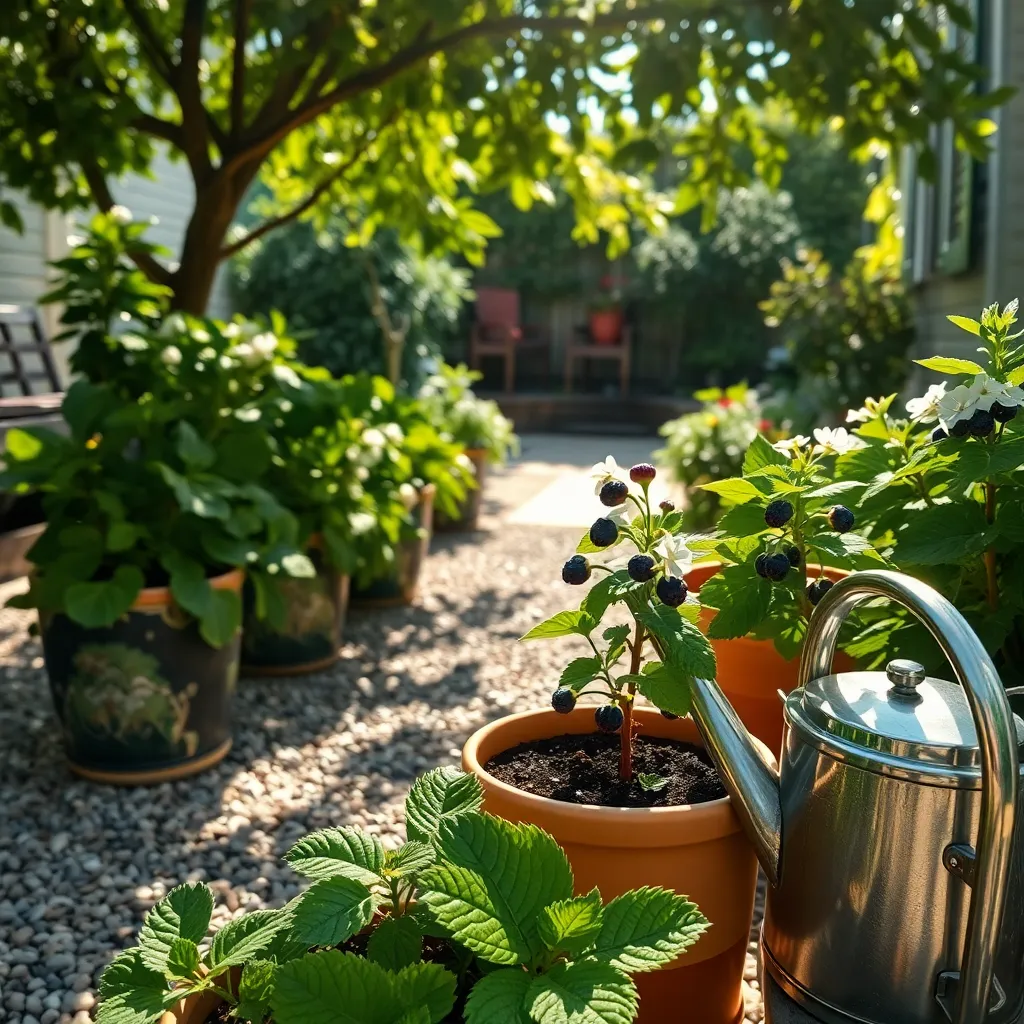
Watering blueberries in pots frequently is crucial because they have limited soil volume compared to those grown directly in the ground. Potted blueberries need consistent moisture to maintain their health and productivity, as the soil can dry out quickly, especially in warm weather.
Using a well-draining potting mix is essential to prevent waterlogged roots, which can lead to root rot. Consider a mix specifically designed for acid-loving plants, as blueberries thrive in acidic conditions with a pH between 4.5 and 5.5.
To ensure proper hydration, make it a habit to check the soil moisture level daily, especially during the growing season. Insert your finger about an inch into the soil; if it feels dry, it’s time to water. Aim to keep the soil consistently moist but not soggy.
For advanced gardeners, incorporating a drip irrigation system can automate and optimize watering for your potted blueberries. This system provides a steady supply of water and helps to maintain the ideal moisture level without the risk of overwatering, which is a common issue with manual watering.
Temperature Fluctuation Effects

Growing blueberries in pots can be challenging due to temperature fluctuations. Pots are more susceptible to changes in ambient temperature, which can stress the plants. It’s important to place pots in a location where they receive morning sun and afternoon shade to moderate temperature swings. This positioning helps protect the plants from overheating in the summer.
To minimize root temperature fluctuations, consider using large pots. Larger pots have more soil volume, which helps insulate the roots against sudden temperature changes. Additionally, wrapping pots with insulating materials like bubble wrap or burlap during colder months can protect roots from frost.
Another strategy is to mulch the surface of the pot with organic materials like pine bark or straw. Mulching helps to maintain a consistent soil temperature and retains moisture, which is beneficial during sudden temperature drops. It’s also helpful to elevate pots slightly off the ground to prevent heat absorption from hot surfaces.
For advanced gardeners, consider using a soil thermometer to monitor root temperatures. This tool can help you determine when additional insulation or relocation of the pot is necessary. Maintaining optimal root temperatures is crucial for the health of your blueberry plants, ensuring a bountiful harvest.
Pruning and Maintenance Difficulties
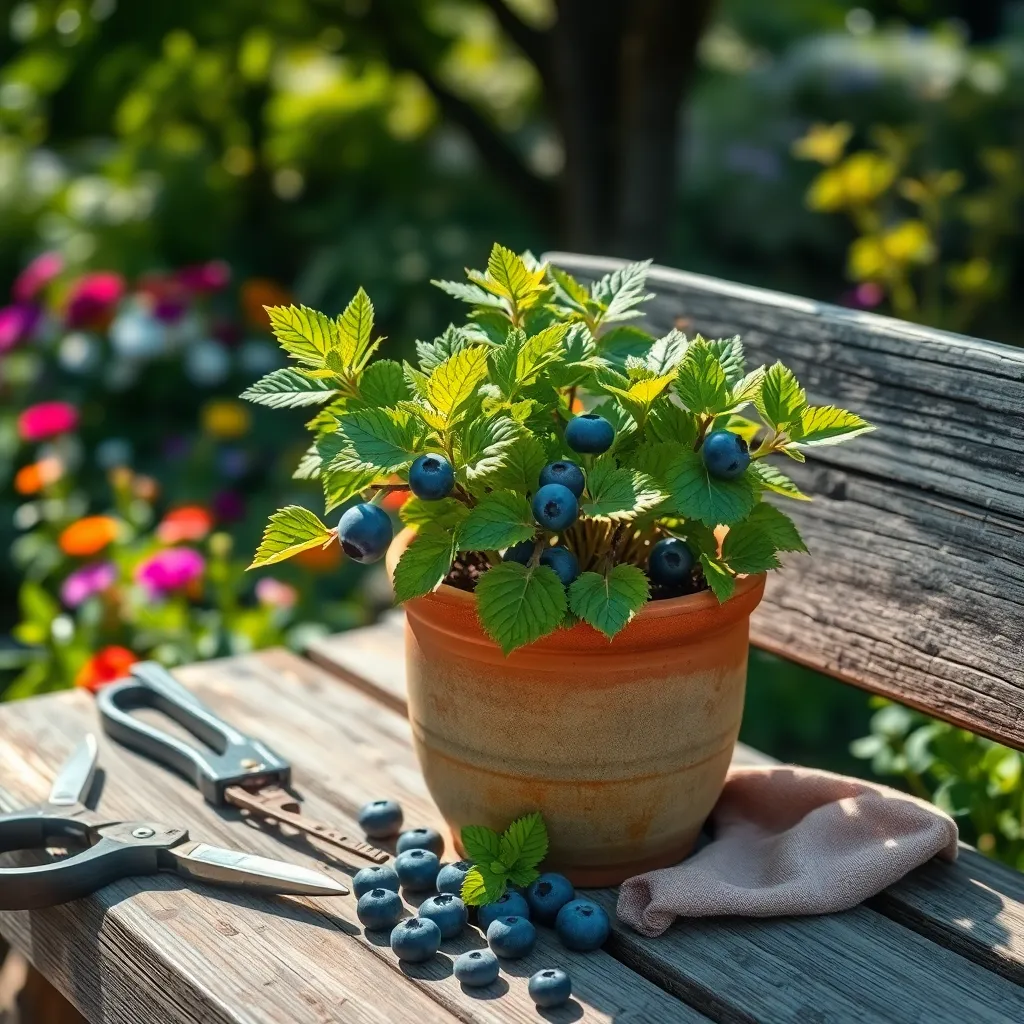
Pruning blueberries in pots can pose unique challenges, especially when compared to ground-grown plants. The limited space in a pot can restrict root development, leading to uneven growth and making it difficult to identify the best canes for trimming. To ensure healthy growth, it’s important to regularly assess the plant’s shape and remove any dead or weak branches. This not only helps maintain a tidy appearance but also promotes better air circulation and sunlight penetration.
Careful observation is key when determining the right time to prune your potted blueberries. Typically, the best time to prune is in late winter when the plant is dormant, but make sure to adjust based on your local climate conditions. Start by removing any canes that are more than six years old, as they become less productive over time. Additionally, thinning out overcrowded branches will help redirect the plant’s energy to fruit-bearing canes.
One of the difficulties of maintaining blueberries in pots is their specific soil requirements. Blueberries thrive in acidic soil with a pH between 4.5 and 5.5, which can be challenging to maintain in containers. Regularly test the soil pH and consider using a peat-based potting mix to provide the necessary acidity. Including organic matter like pine needles or sawdust can also help maintain the desired pH levels.
Water management is another critical aspect of blueberry maintenance in pots. Blueberries require consistent moisture, but overwatering can lead to root rot, a common issue in container gardening. Ensure the pot has adequate drainage holes and add a layer of gravel at the bottom to prevent waterlogging. A drip irrigation system can be a helpful tool for maintaining consistent moisture levels without over-saturating the soil.
Conclusion: Growing Success with These Plants
As we navigate the complexities of cultivating blueberries in pots, we uncover five key relationship concepts that resonate beyond the garden. First, we learn that space constraints can limit growth, much like how emotional distance can hinder relationships. Second, the need for consistent care and attention parallels the nurturing required to sustain a healthy partnership. Third, understanding and adjusting to environmental factors remind us of the importance of adaptability in love. Fourth, recognizing the limits of container size teaches us about respecting boundaries. Lastly, overcoming potential root entanglements mirrors resolving conflicts to foster stronger connections.
Now, let’s take immediate action: identify one aspect of your relationship that could benefit from more attention or adaptability and commit to nurturing it this week. By doing so, you’ll cultivate a more resilient and flourishing bond.
Remember to bookmark this article as a valuable resource. Revisiting these insights can provide guidance and reassurance in nurturing your relationships, much like tending to a bountiful garden.
As you move forward, embrace the journey of relationship growth with optimism and dedication. With each mindful step, you are paving the way for abundant love and connection. 🌿❤️

